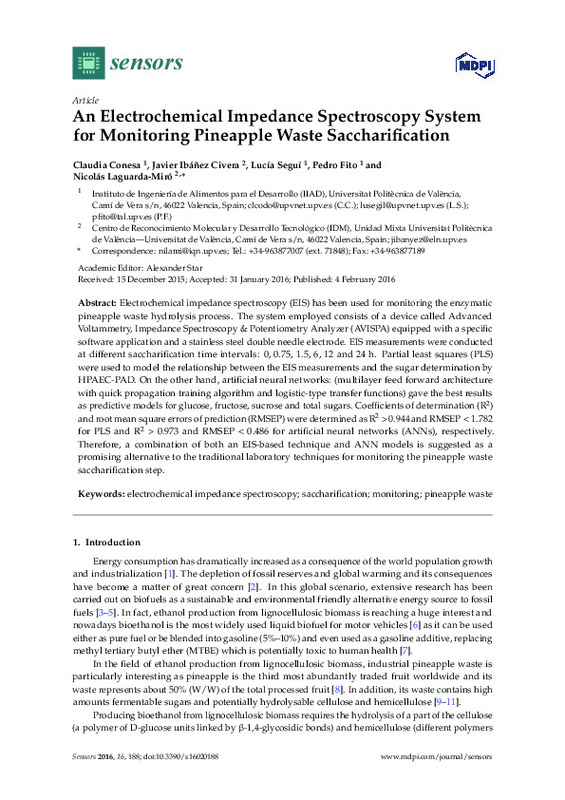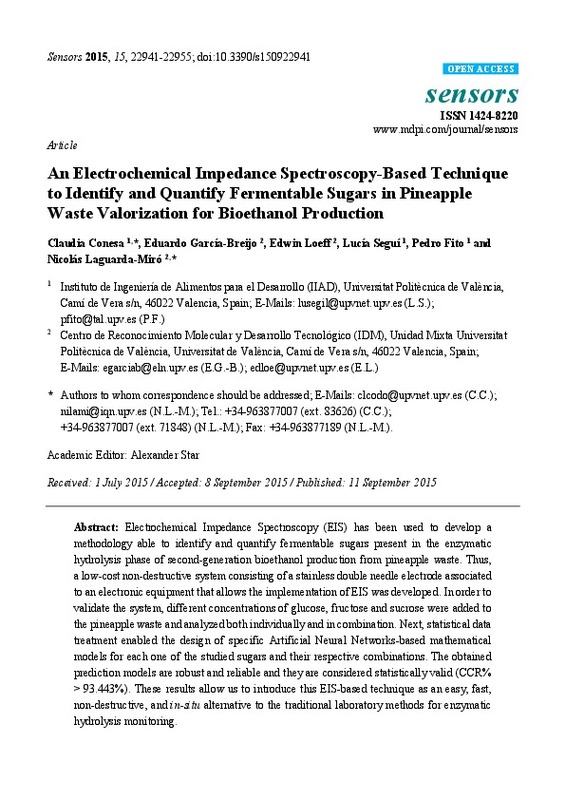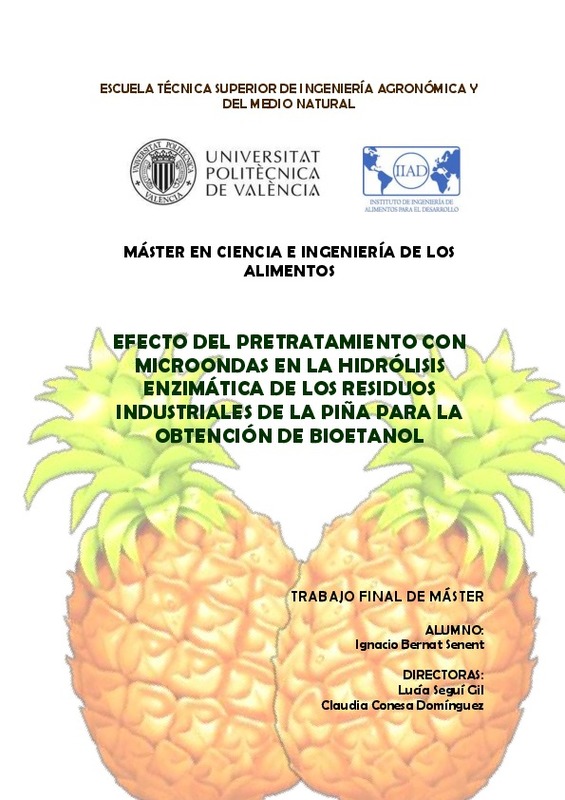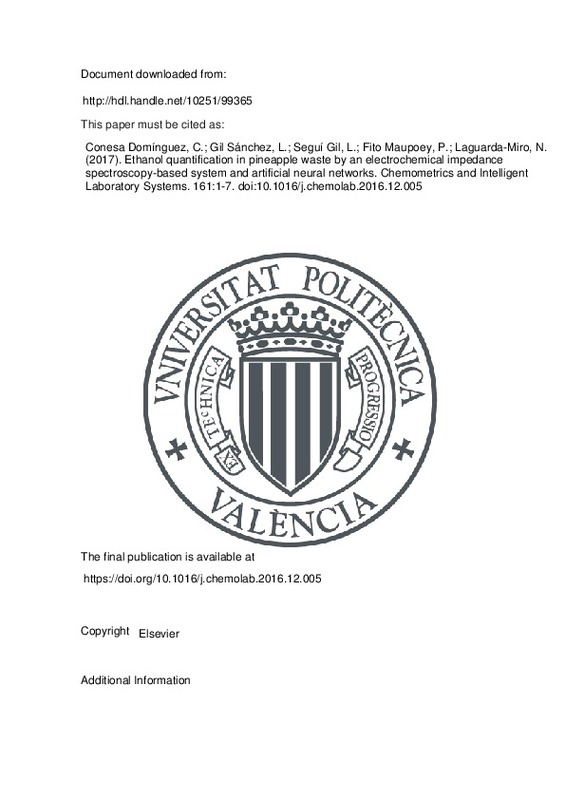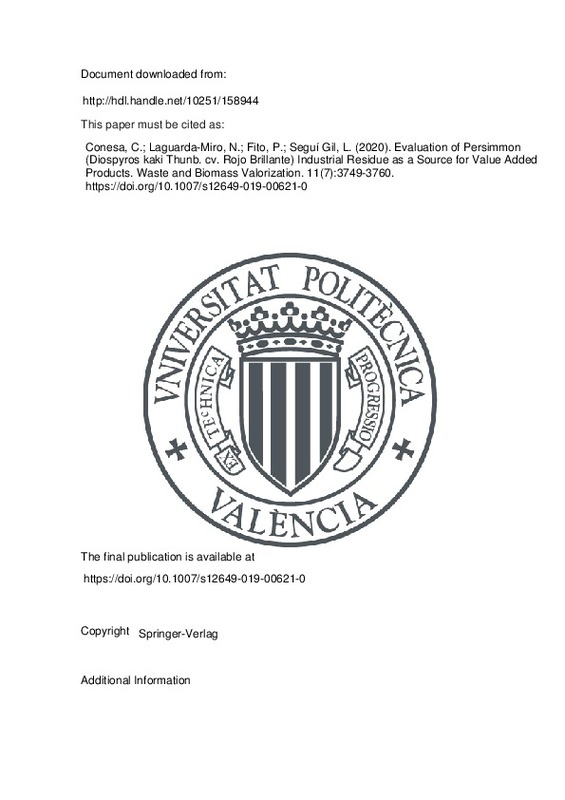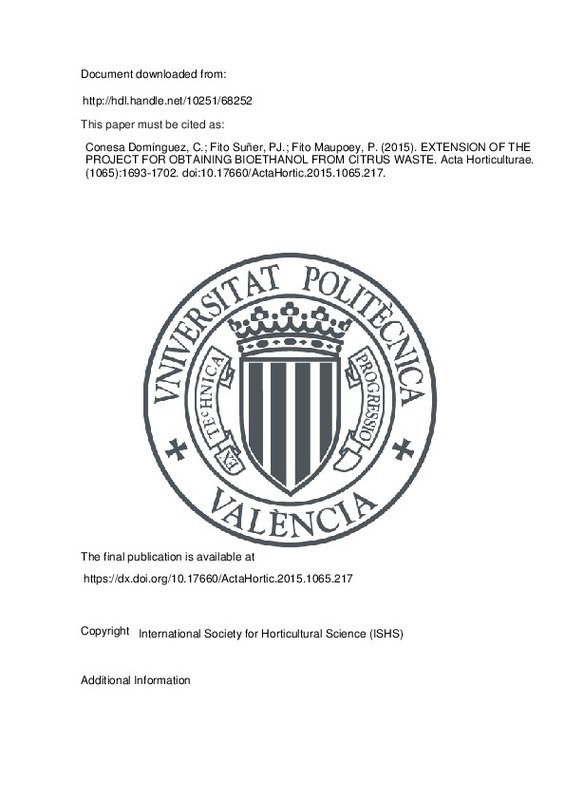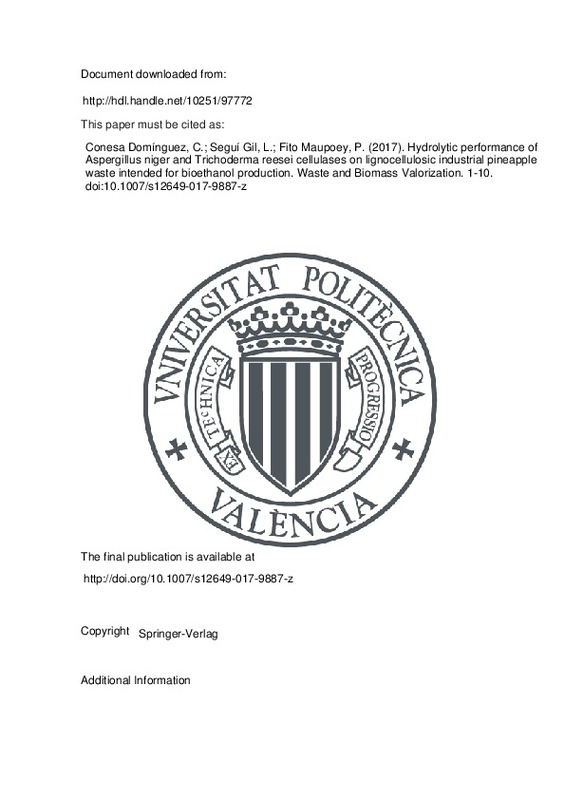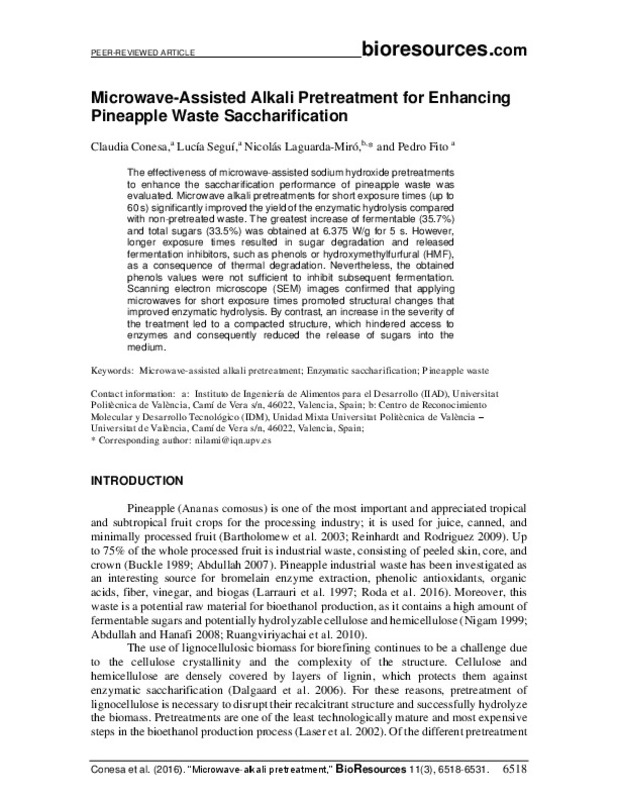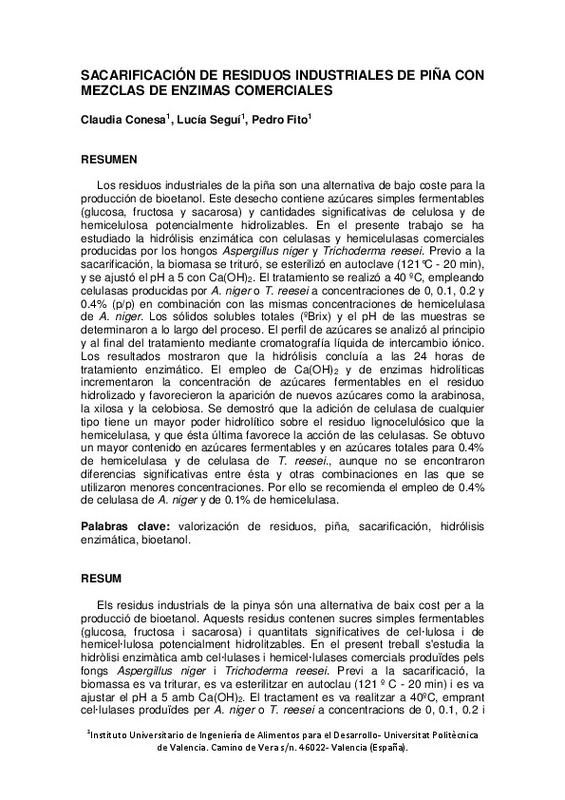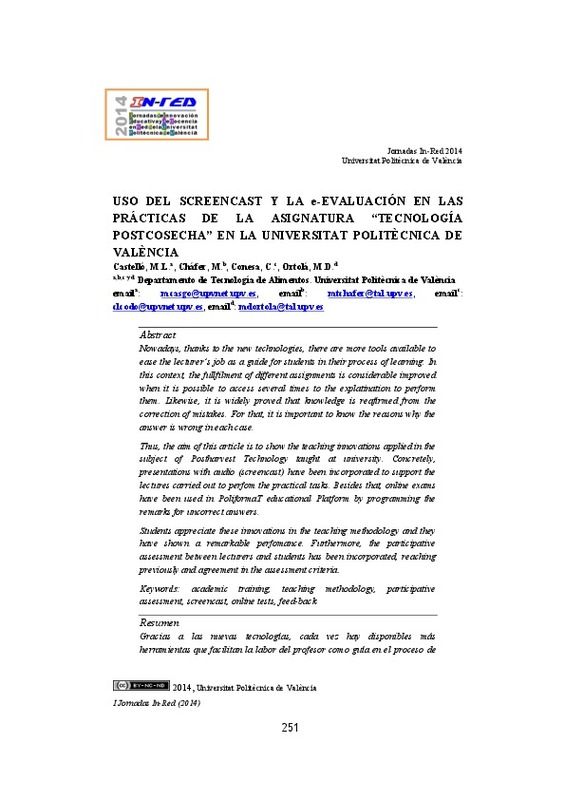

Listar por autor "Conesa Domínguez, Claudia"
RiuNet: Repositorio Institucional de la Universidad Politécnica de Valencia
- RiuNet repositorio UPV
- :
- Listar por autor
JavaScript is disabled for your browser. Some features of this site may not work without it.
Buscar en RiuNet
Listar
Mi cuenta
Ayuda RiuNet
Admin. UPV
Listar por autor "Conesa Domínguez, Claudia"
Mostrando ítems 1-15 de 15
-
Conesa Domínguez, Claudia; Ibáñez Civera, Francisco Javier; Seguí Gil, Lucía; Fito Maupoey, Pedro; Laguarda-Miro, Nicolas (MDPI, 2016-02)[EN] Electrochemical impedance spectroscopy (EIS) has been used for monitoring the enzymatic pineapple waste hydrolysis process. The system employed consists of a device called Advanced Voltammetry, Impedance Spectroscopy ...
-
Conesa Domínguez, Claudia; García Breijo, Eduardo; Loeff, Edwin; Seguí Gil, Lucía; Fito Maupoey, Pedro; Laguarda Miró, Nicolás (MDPI, 2015-09)Electrochemical Impedance Spectroscopy (EIS) has been used to develop a methodology able to identify and quantify fermentable sugars present in the enzymatic hydrolysis phase of second-generation bioethanol production from ...
-
Ferrando Giménez, Amparo Belén (Universitat Politècnica de València, 2015-11-23)Se pretende hacer frente a una demanda energética creciente mediante el empleo de fuentes de energías renovables, sostenibles y respetuosas con el medio ambiente. Por otro lado, los caquis son frutos muy apreciados ...
-
Jaunarena González, Daniela Alejandra (Universitat Politècnica de València, 2015-06-01)El proceso de industrialización de la piña enlatada genera gran cantidad residuos que provocan un gran impacto ambiental5. Estos residuos contienen azúcares fermentables como son la glucosa y la fructosa, que los convierte ...
-
Conesa Domínguez, Claudia (Universitat Politècnica de València, 2017-09-01)As stated by the United Nations Department of Economic and Social Affairs, the first half of the present century will experience a significant increase in global energy demand due to the expected growth of world population ...
-
Bernat Senent, Ignacio Gerardo (Universitat Politècnica de València, 2013-11-18)[ES] Los residuos procedentes de la industrialización de la piña pueden llegar a alcanzar hasta un 50% (m/m) del total de fruta procesada. Al tratarse de un material con una proporción significativa de azúcares fermentables, ...
-
Conesa Domínguez, Claudia; Gil Sánchez, Luís; Seguí Gil, Lucía; Fito Maupoey, Pedro; Laguarda-Miro, Nicolas (Elsevier, 2017)[EN] Electrochemical impedance spectroscopy (EIS) technique has been applied to determine the ethanol concentration in pineapple waste samples. To do this, six different concentrations of ethanol were added to the pineapple ...
-
Conesa, Claudia; Laguarda-Miro, Nicolas; Fito, Pedro; Seguí Gil, Lucía (Springer-Verlag, 2020-07)[EN] Purpose To evaluate the potential of the industrial waste of Rojo Brillante persimmon as a source for value-added products. The antioxidant compounds present in persimmon industrial waste (peel and calyx) and the ...
-
Conesa Domínguez, Claudia; Fito Suñer, Pedro José; Fito Maupoey, Pedro (International Society for Horticultural Science (ISHS), 2015-01)[EN] The production of citrus fruit in Spain generates more than 0.5 million tons of waste. This is mainly due to rejects when packing fresh fruit and the waste generated by processing industries. An important challenge ...
-
Conesa Domínguez, Claudia; Seguí Gil, Lucía; Fito Maupoey, Pedro (Springer-Verlag, 2017)[EN] Purpose The hydrolytic action of Aspergillus niger and Trichoderma reesei commercial cellulases, alone or combined with A. niger hemicellulase, against industrial pineapple waste as a previous step to produce bioethanol ...
-
Conesa Domínguez, Claudia; Seguí Gil, Lucía; Laguarda-Miro, Nicolas; Fito Maupoey, Pedro (North Carolina State University, 2016-08)The effectiveness of microwave-assisted sodium hydroxide pretreatments to enhance the saccharification performance of pineapple waste was evaluated. Microwave alkali pretreatments for short exposure times (up to 60 s) ...
-
Conesa Domínguez, Claudia; Seguí Gil, Lucía; Laguarda-Miro, Nicolas; Fito Maupoey, Pedro (ElsevierInstitttion of Chemical Engineers, 2016-10)[EN] The pineapple industry generates significant amounts of residues which are classified as lignocellulosic residual biomass. In the present paper, microwaves are studied as a pretreatment to improve pineapple waste ...
-
Azaf Ferrari, Oriella Carolina (Universitat Politècnica de València, 2016-10-14)[ES] La obtención de bioetanol a partir de biomasa residual de origen industrial es una alternativa sostenible de creciente interés. Sin embargo, la matriz lignocelulósica necesita ser pretratada e hidrolizada para liberar ...
-
Conesa Domínguez, Claudia (Universitat Politècnica de València, 2013-04-23)[EN] Los residuos industriales de la piña son una alternativa de bajo coste para la producción de bioetanol. Este desecho contiene azúcares simples fermentables (glucosa, fructosa y sacarosa) y cantidades significativas ...
-
Castelló Gómez, María Luisa; Cháfer Nácher, María Teresa; Conesa Domínguez, Claudia; Ortolá Ortolá, Mª Dolores (Editorial Universitat Politècnica de València, 2014-07-16)[Otros] Nowadays, thanks to the new technologies, there are more tools available to ease the lecturer¿s job as a guide for students in their process of learning. In this context, the fullfilment of different assignments ...
Mostrando ítems 1-15 de 15

Universitat Politècnica de València. Unidad de Documentación Científica de la Biblioteca (+34) 96 387 70 85 · RiuNet@bib.upv.es


